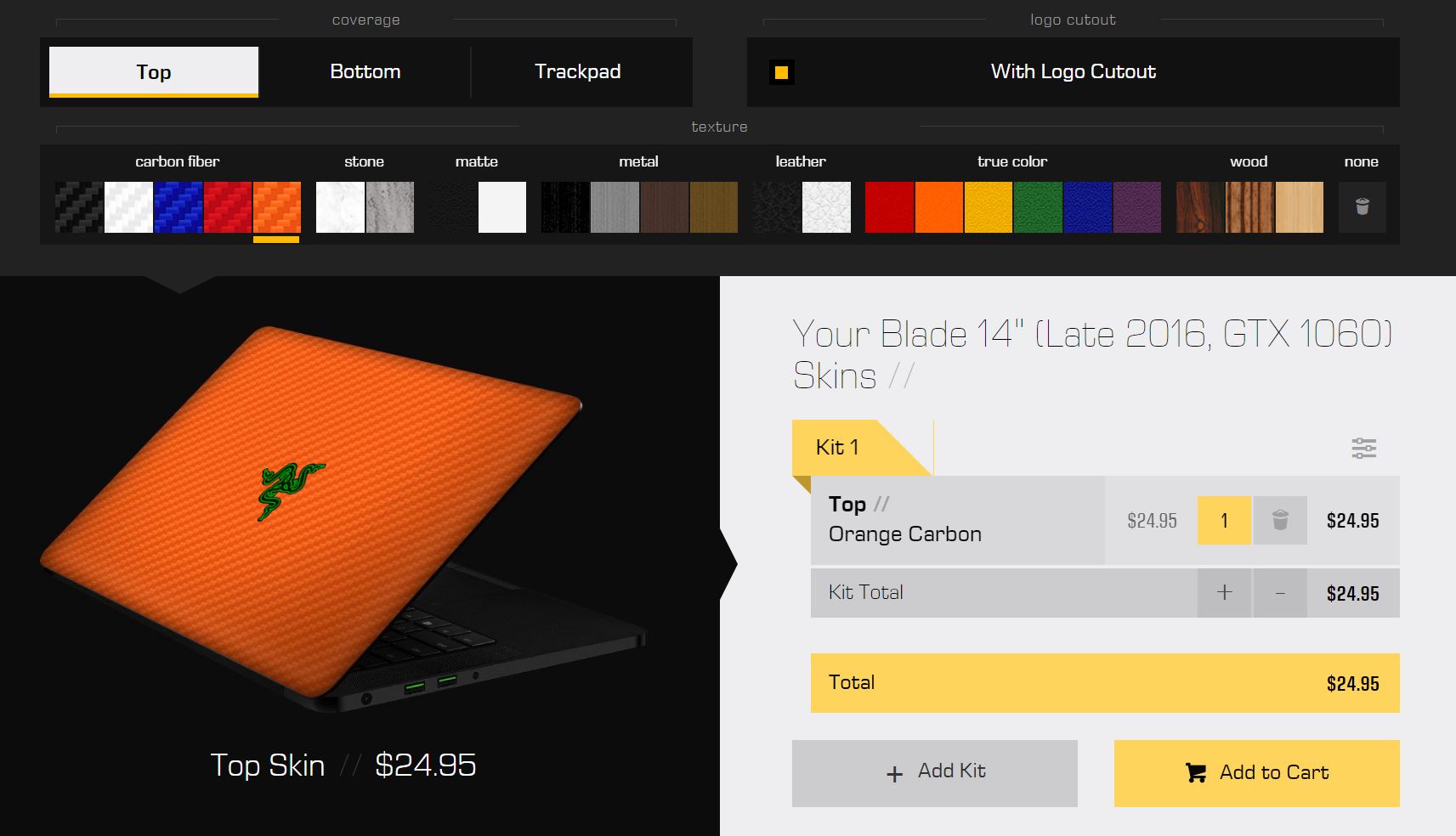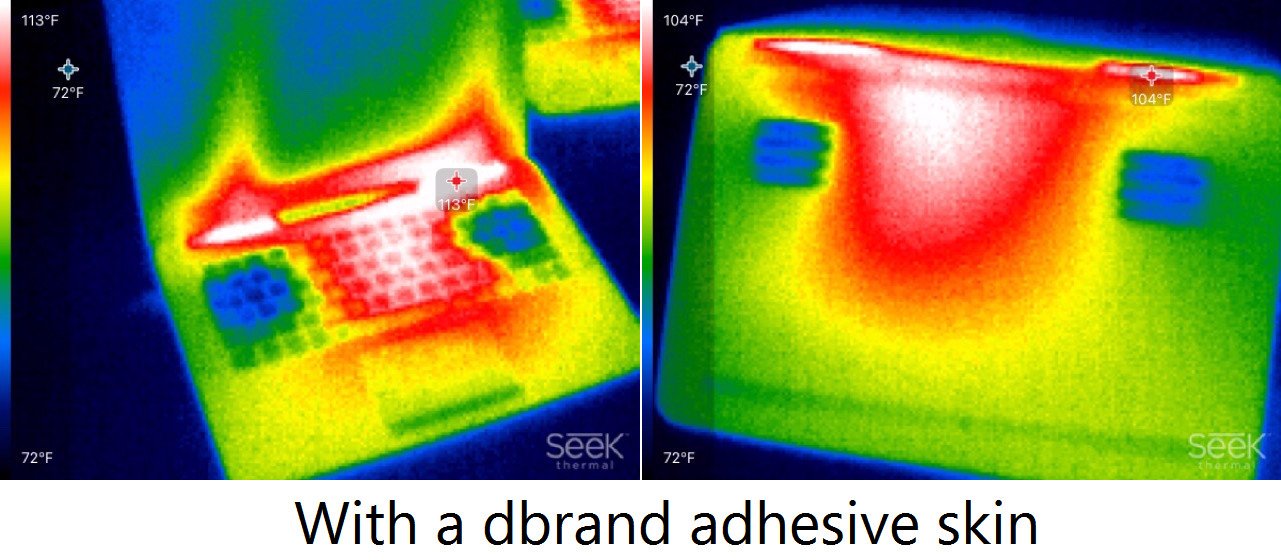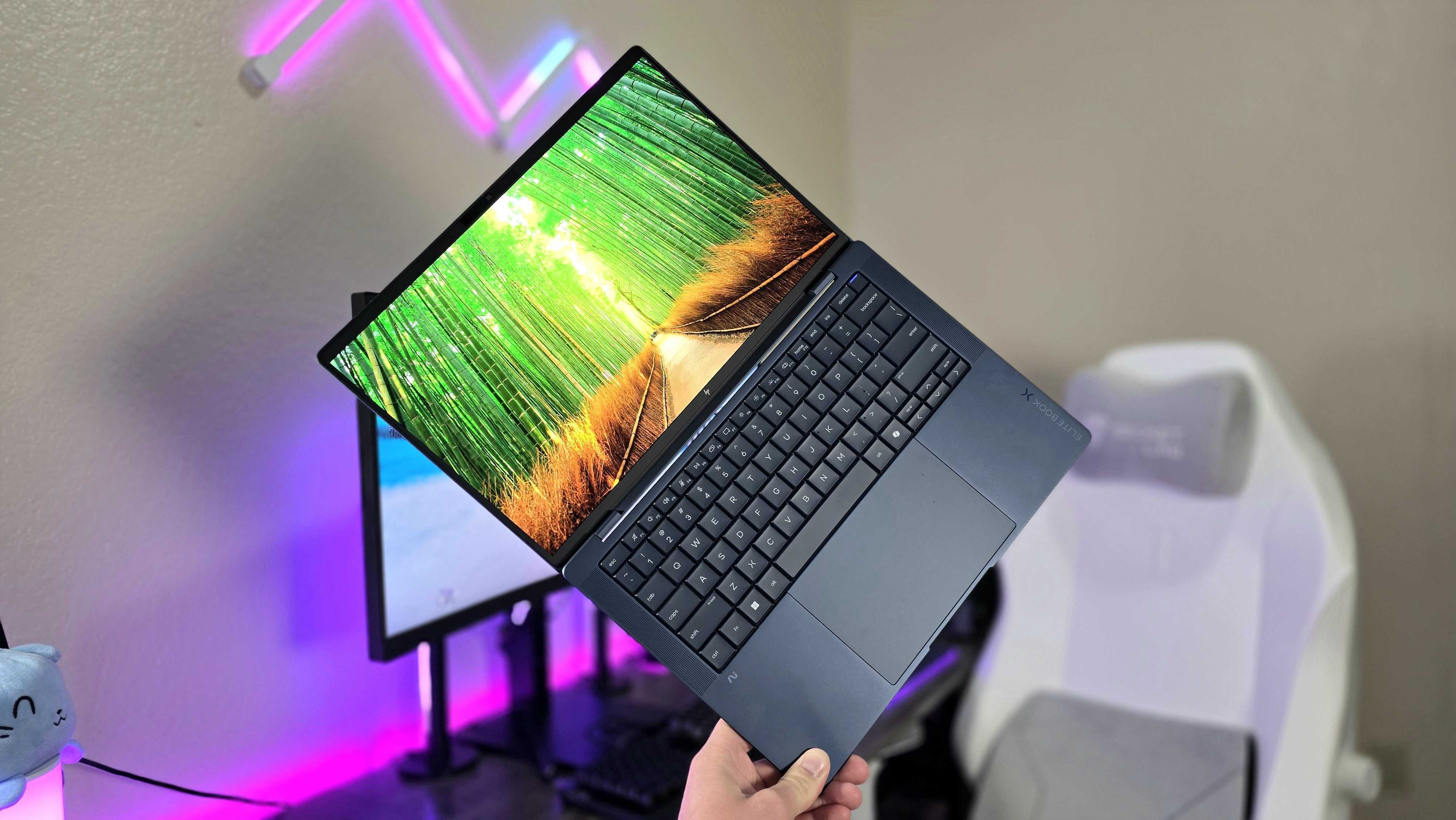Does putting an adhesive skin on your gaming laptop make it hotter?

One of the fun things about this job is fielding interesting questions that may not seem like obvious inquiries. Such an example recently came up when I found multiple people asking whether using a dbrand or DecalGirl adhesive skin on your laptop makes it hotter.
On the face of it, the answer to me seemed like an obvious 'no, ' and I found the question odd. Nonetheless, I could see the 'broscience' explanation of why maybe it could matter.
Setting the scene
For those who don't know companies like dbrand and DecalGirl sell custom skins for various laptops, PCs, tablets, and phones. I've used both before and have been very happy with the look, quality, and feel of the skins, which are a thicker and higher quality than regular stickers.

Whether it's to protect your device from scratches, cover up existing damage, or just adding some flair I recommend dbrand or DecalGirl if you're looking for a change.
Why hotter?
On the face of it, I found the concern over the skins peculiar. After all, the skins are not covering the ports or vents of the device – so why would it matter?
Nonetheless, you are adding a layer across the bottom of the laptop and in theory that could act as insulation I suppose. Devices like the Razer Blade are all metal and like the HP Spectre x360 that material does help dissipate heat due to its ability to conduct thermal energy.
Still, I'm skeptical. The decal skins are not super thick, and those ports and intake outlets are still doing their job. Let's bust out some science.
All the latest news, reviews, and guides for Windows and Xbox diehards.
The Test
To evaluate whether using an adhesive laptop skin affects thermals I conducting a simple experiment with the Razer Blade 14" (late-2016):
- Play DOOM for 20 minutes without the skin
- Take temperature readings using a Seek Infrared Thermal Imaging device
- Let laptop cool; apply a dbrand skin (top and bottom)
- Replay DOOM for another 20 minutes
- Retake temperature readings using the Seek infrared camera
What constitutes a valid finding will vary, but presumably if putting a skin on mattered you would want to see at least a few degrees increase in temperature to be significant. Anything less than 5 degrees could easily be written off as noise and within the margin of error.
Results
There are two areas that I am concerned with when determining the results:
- Is there a general increase in system temperatures across the device (top, bottom, back)?
- Is there a difference in the thermal dissipation pattern between the two scenarios?
The first question is rather straight forward. Do the temperatures increase at any part of the device in a significant or alarming manner?
For this question, the answer is no. On both devices, the temperatures would hit around 113-115F (45-46C) in the upper right of the laptop. For the bottom near the back, the Blade ran between 100-104F (38-40C). The Blade does get hotter if in a warmer environment, plugged in, or played for a longer time. I saw little reason to believe any of that would have changed the results.
The second question though is more interesting. Does the decal skin affect the heat dissipation pattern?
Again, I saw no difference between the thermal imaging trends. Seek's thermal camera is accurate, and the distribution of hot and cool spots is very apparent in both test situations.
Conclusion
The results are likely not surprising. Putting a body skin decal on your metal laptop – even a performant gaming rig – should not cause any changes in system temperatures or even the distribution of that energy.
Theorizing the outcome is one thing but seeing it tested with empirical data is how science is done. I hadn't seen anyone do this kind of test before and the results to me seem very clear. Granted, there is some room for further inquiries like trying on different devices, or running at full CPU load for an hour. Nonetheless, there is nothing to indicate from our results or even anecdotal reports from users that my results would be different.
Conversely, there is no reason to believe that heat will affect the skin either. The laptop is not getting unusually hot, and the adhesive does not appear to break down. Still, more longterm testing would be needed from users to verify completely.
For now, however feel free to use that dbrand or DecalGirl skin on your favorite device.

Daniel Rubino is the Editor-in-chief of Windows Central. He is also the head reviewer, podcast co-host, and analyst. He has been covering Microsoft since 2007 when this site was called WMExperts (and later Windows Phone Central). His interests include Windows, laptops, next-gen computing, and wearable tech. He has reviewed laptops for over 10 years and is particularly fond of 2-in-1 convertibles, Arm64 processors, new form factors, and thin-and-light PCs. Before all this tech stuff, he worked on a Ph.D. in linguistics, performed polysomnographs in NYC, and was a motion-picture operator for 17 years.


